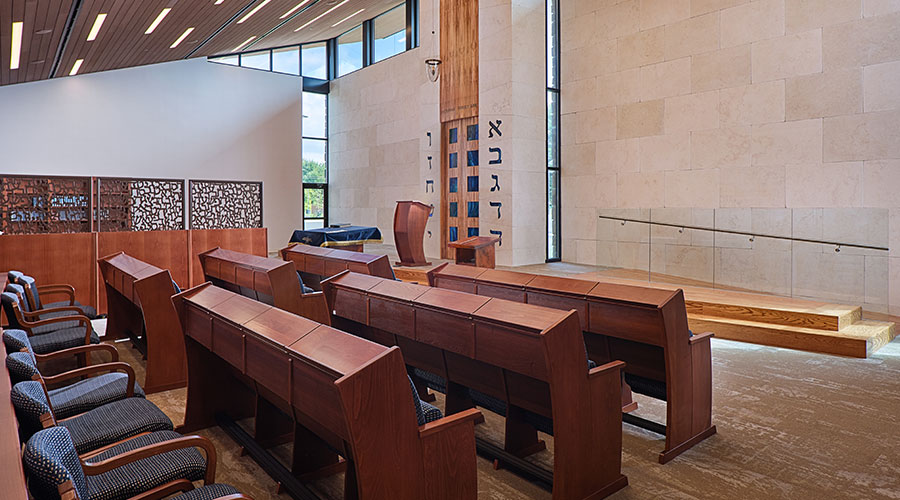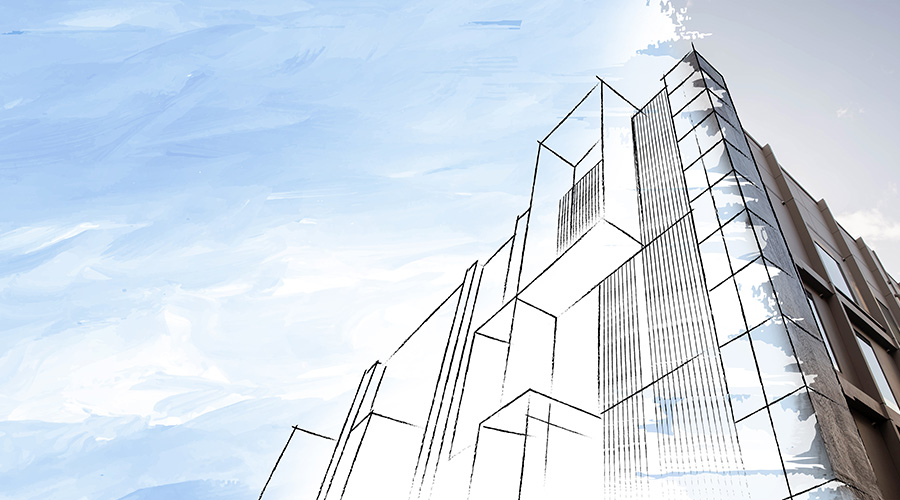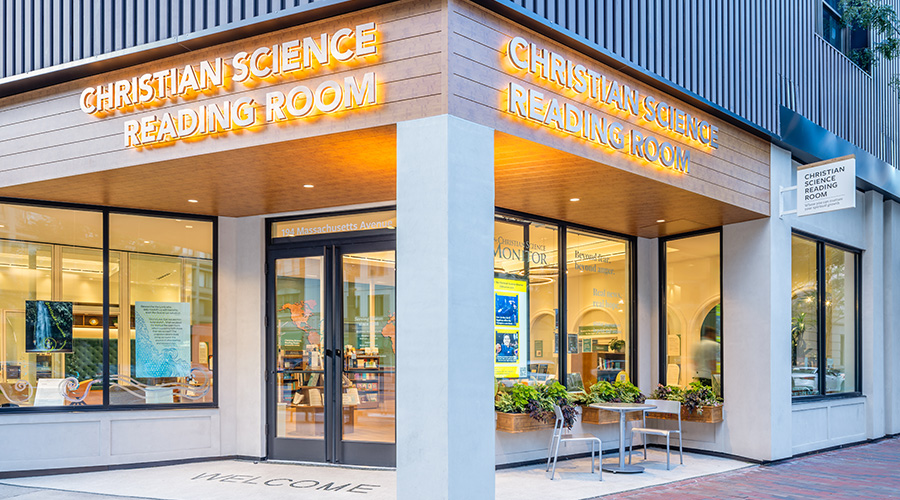Adaptive Reuse Gives Old Facilities New Purpose
Building owners and executives who focus on critical issues can ensure reused facilities match organization’s goals.
By Dan Hounsell, Senior Editor
Turmoil is the watchword for the present era in institutional and commercial facilities. Public facilities that rely on taxpayers to support their operations and maintenance are struggling. Many commercial office buildings continue to reel from the effects of the COVID-19 pandemic. Healthcare facilities seek new revenue streams by reaching further into communities.
Given these and other challenges, many building owners and executives are rethinking many aspects of their facilities and operations. In a growing number of cases, they are turning to adaptive reuse to create facilities that will help achieve their organizations' goals.
The right stuff?
Adaptive reuse of existing facilities offers a host of potential benefits that can be appealing to building owners and facility executives, but ensuring a facility is an appropriate candidate for adaptive reuse requires that they take a close look at several critical factors. The first involves the size of the facility.
“Are you going to be stretching the program to fit into the building?” asks Christine Lyons, associate and senior project manager at IKM Architecture. “Will you have some shell space left, or does the program require you to maybe think about an addition onto the building?
“Another thing you would want to look at is how much of the building would you want to reuse, or how much does it make sense to reuse before it’s a complete teardown. Doing a proper pro forma and getting somewhat accurate numbers to put into the pro forma is important.”
Nathan Malone, venue sector design and construction director at Henderson Engineers, says successful adaptive reuse also requires an early assessment of the facility’s utilities and how well they can support the intended use.
“One of the first things that we would try to consider is, ‘Are we able to sustain whatever the reuse would be with the existing building, or are we going to have to start adapting the utility services?’” he says. “That’s when we really start having conversations because that involves a lot of cost and effort.”
Zoning and code considerations
Adaptive reuse is far different from development from the ground up, where a developer and architect start with a clean slate to design a building to their desired specifications. Adapting an existing building for a new use requires due diligence into existing conditions and, ideally, developing a viable plan to repurpose the facility to accommodate the desired new use.
First, owners and executives need to conduct a more thorough assessment of the target facility’s mechanical, electrical and plumbing systems.
“We’re looking at all of the systems that are there in place,” says Jared Donnamiller, senior vice president with WSP, a consulting engineering firm. “What can we reuse, or what do we need to replace? A big one there is, ‘What do we have to upgrade? Do we need to do a full electric service upgrade because we don’t have enough capacity? That is one of the first things we'll check.”
The assessment should examine mechanical systems as they relate to any reuse challenges presented by the facility.
“Depending on what the reuse is, if it’s something where you’re restricted in making changes to the facade or to something on the inside, and you’re changing your use type, a lot of times our mechanical system is significantly different,” Malone says. “Where do we put equipment, whether that’s interior or exterior? Does that fit on the side? Does that fit on the building? How do we get air in and out? Can we use louvers?”
A central element in due diligence is understanding code considerations and zoning issues that might go along with changing the use of the facility.
“If it’s an older building or any of those that have been around for a little while and we’re trying to upgrade it to something new, we do have new codes that we have to adhere to, which could affect things like louver sizes or electrical equipment,” Malone says.
Owners and executives looking to fully understand the facility’s zoning and code challenges need to bring local code officials into the conversation early.
“You want to start with a conversation with the municipality that you're in,” Lyons says. “If you’re changing use, sometimes that’s a whole zoning change. You have to figure out what you’re going to need to do to achieve that zoning change if that’s required. It’s complicated. It requires lawyers. It requires time — a lot more time usually than people think. Having that built into your schedule and your plan is important.
“Once you change a use, with very few exceptions, you will need to bring the whole building up to code completely. There’s a lot of challenges there, especially if you have accessibility issues with ramping.”
As with many processes in facilities management, building owners and executives need to be sure they communicate clearly and effectively with all parties involved in zoning and code compliance for the reused facility.
“I’ve seen people run into issues when they don’t have proper communication,” Lyons says. “Even before you buy the property, you could have conversations with the municipality or whatever jurisdiction you’re in to let them in on the thoughts of the project. They’ll tell you what the challenges are going to be.
“Having those conversations very early in the process is helpful not only for the project team. It also helps the municipality or the city to really understand where you’re coming from, and it brings them along. A lot of times, projects get stalled before they even start because of this. The management of the zoning issues would be an important, number one piece to start with.”
Spotlight on engineering
Adaptive reuse involves a host of players, from the building owner to the architect to code officials. But savvy facility executives understand that one party is especially critical to success — the in-house engineering team, which brings a deep understanding of the organization’s facilities priorities and can project them onto the potentially reused facility.
“Facilities people should always be involved to hear what that goal is and understand the goal,” Lyons says. “They’re the ones really with the knowledge to execute it. That kind of team has to have a lot of communication. Mostly, it’s understanding what the goals are and being specific about those goals so you can start to frame a program around them. It’s always a different crew of people, but the facilities people are the common thread.”
The involvement of engineering teams is especially important for owners and executives who have to make critical decisions early in the process and need insights on the reused facility’s condition and capabilities.
“It’s important in these conversions and adaptive reuse to get your team in early,” Donnamiller says. “Some developers don’t get their engineering teams in early enough. Some of the things we need to do require an immediate decision that then changes the direction of the whole project.”
Adds Lyons, “I would hope that people considering adaptive reuse would really think about putting the work in early. You really have to pay attention to what makes sense and what doesn’t financially. There are a lot of factors you have to consider at first and a lot of due diligence and legwork before you even start this kind of project. If those stars align, you have to have the courage to do it. If they don’t align, you have to be ready to say that this just isn’t feasible.”
Myths and misinformation
Adaptive reuse often is a complex process that requires a series of decisions, and owners and facility executives need a great deal of information to make those decisions. Unfortunately, not all the information that comes owners’ way is accurate.
“One common misconception is that everything is the same,” Malone says. “They had a mechanical system before, so we need a mechanical system after, and that should work. Depending on what that use type was and what it’s changing to, that may or may not be true.”
Donnamiller says owners and executives also need to avoid the common misconception that one size can fit all when it comes to developing a plan for adaptive reuse.
“There is not one option that fits all solutions here, whereas if you design a new commercial office building out of the ground or a new residential (building), everybody has their copy and repeat,” he says. “This is not that way. Everybody, owners included, has to be ready to go through seven different options with an intense design charette that’s going to have multiple iterations at every stage of the process to get the right thing for the end users and for the owner for it to pencil financially.”
The ultimate challenge for building owners and facility executives involved in an adaptive reuse is to sift through all the information, make a decision based on available facts and determine the most appropriate course of action for their organizations.
“People might shy away from adaptive reuse because they think it’s too complicated,” Lyons says. “It might be easier for a new build, and in many cases that may be true.” As an example of a complex project that offered a great deal of potential in achieving the organization’s goals, she points to an adaptive reuse project in which her firm worked with the Penn State Health’s Lancaster Pediatric Center to convert a former Toys-R-Us building into a children’s outpatient center.
“The location of this parcel made total sense,” she says. “It was right at a crossroads of two heavily traveled streets. It was in the right catchment area for all the surfaces services they wanted to provide. It just made a lot of sense to have that exact location, so they were willing to take on those complexities.”
Dan Hounsell is senior editor for the facilities market. He has more than 30 years of experience writing about facilities maintenance, engineering and management.
Related Topics:












